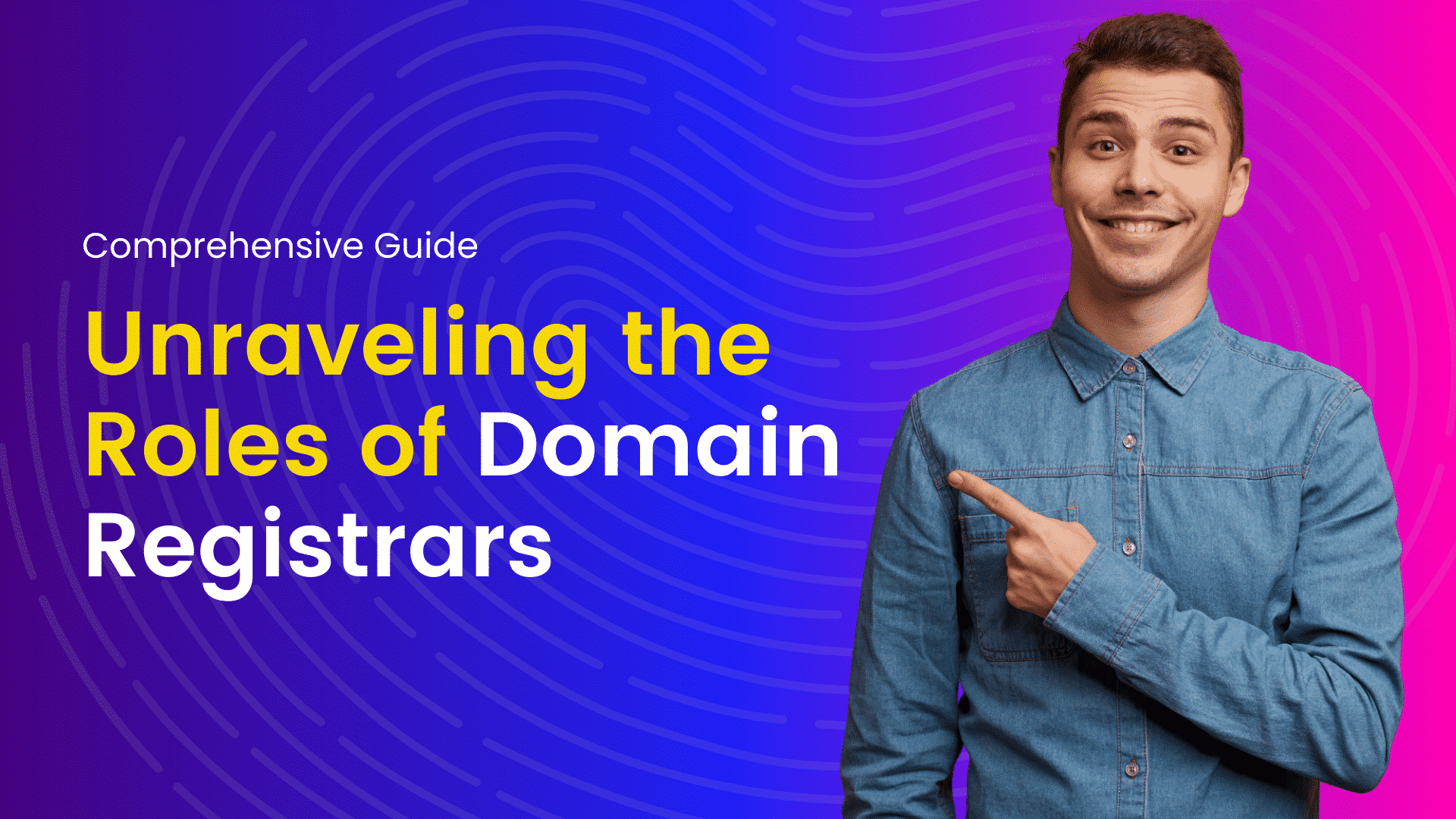In an increasingly digital world, securing your online presence is paramount. Your domain name is your digital identity, and protecting it from unauthorized access and theft is crucial. Domain security involves several layers of protection, and one of the key elements in this process is the Extensible Provisioning Protocol (EPP) code.
domain security fundamentals and delves into the importance and functionality of EPP codes
Why Domain Security Matters
In the ever-expanding digital landscape, where businesses, organizations, and individuals thrive, domain security stands as a paramount concern. A domain is not just a web address; it is a digital identity, a cornerstone of your online presence. Ensuring its security is not merely an option but a necessity in safeguarding your reputation, data, and overall digital operations.
Protecting Your Brand Integrity
Your domain name is often the first point of contact between you and your audience. It’s your brand’s digital storefront, embodying your identity, values, and offerings. Any compromise to its security can tarnish your brand integrity irreversibly.
Cybercriminals may exploit vulnerabilities in your domain to perpetrate phishing attacks, malware distribution, or even impersonate your brand for illicit activities. Such breaches not only erode customer trust but also damage your brand’s reputation, leading to financial losses and legal repercussions.
Mitigating Financial Risks
Domain hijacking is a significant threat in the digital realm. Attackers may gain unauthorized control over your domain, redirecting traffic to malicious sites or holding it for ransom. The financial implications can be severe, ranging from loss of revenue due to downtime to potential extortion demands.
Moreover, a compromised domain can facilitate fraudulent transactions, jeopardizing financial transactions and customer data. Investing in robust domain security measures is akin to purchasing insurance against these financial risks, safeguarding your bottom line and preserving business continuity.
Ensuring Data Confidentiality and Compliance
Domains often serve as gateways to sensitive data repositories, communication channels, and transactional platforms. Securing them is paramount to maintaining data confidentiality and regulatory compliance.
Breaches in domain security can lead to unauthorized access to proprietary information, customer records, and intellectual property. Not only does this pose a direct threat to your operations, but it also exposes you to regulatory fines, legal liabilities, and reputational damage.
By implementing encryption protocols, access controls, and regular security audits, you not only fortify your domains against external threats but also demonstrate due diligence in adhering to data protection regulations like GDPR, CCPA, and HIPAA.
Preserving Operational Continuity
In today’s interconnected digital ecosystem, any disruption to your domain’s availability can have far-reaching consequences. DDoS attacks, server outages, or DNS misconfigurations can render your services inaccessible, resulting in lost opportunities, disgruntled customers, and diminished productivity.
Domain security encompasses measures to mitigate these risks, including redundant infrastructure, traffic management solutions, and disaster recovery protocols. By proactively addressing vulnerabilities and monitoring for anomalous activities, you bolster your operational resilience and ensure seamless service delivery.
Upholding Trust and Credibility
Trust is the cornerstone of any successful online venture. From e-commerce transactions to user interactions, trust underpins every digital interaction. Domain security plays a pivotal role in fostering trust and credibility among your stakeholders.
By demonstrating a commitment to safeguarding their data and privacy, you instill confidence in your customers, partners, and employees. Trust begets loyalty, advocacy, and sustained relationships, driving your business growth and competitive advantage in the digital marketplace.
In an era defined by digital transformation and cyber threats, domain security emerges as a non-negotiable imperative. It’s not merely a technical concern but a strategic investment in safeguarding your digital assets, brand reputation, and stakeholder trust.
From proactive risk mitigation to regulatory compliance, every aspect of your online presence hinges on the robustness of your domain security measures. By prioritizing domain security, you not only fortify your defenses against evolving cyber threats but also lay the foundation for sustainable growth and resilience in the digital age.
Key Elements of Domain Security
In an era where digital landscapes dominate our lives, securing our online domains has become paramount. Whether it’s personal blogs, e-commerce platforms, or multinational corporations, the importance of domain security cannot be overstated. With cyber threats evolving constantly, understanding the key elements of domain security is crucial for safeguarding valuable assets and sensitive information.
- Strong Passwords and Authentication: The first line of defense for any domain is a robust password policy. Encourage users to create complex passwords that include a mix of letters, numbers, and special characters. Implement multi-factor authentication (MFA) wherever possible to add an extra layer of security. This ensures that even if passwords are compromised, unauthorized access remains difficult.
- DNS Security: Domain Name System (DNS) plays a vital role in translating domain names into IP addresses. However, it’s also a common target for cyberattacks like DNS spoofing and DNS hijacking. Implement DNSSEC (DNS Security Extensions) to authenticate DNS responses and prevent DNS-based attacks. Regularly monitor DNS traffic for any anomalies that could indicate a security breach.
- SSL/TLS Certificates: Secure Sockets Layer (SSL) and Transport Layer Security (TLS) certificates encrypt data transmitted between a user’s browser and your domain’s server, ensuring confidentiality and integrity. Install SSL/TLS certificates on your web servers to establish secure connections. Keep certificates updated to prevent vulnerabilities associated with outdated encryption protocols.
- Web Application Firewalls (WAF): WAFs act as a barrier between web servers and potential threats, filtering and monitoring HTTP traffic to block malicious requests. Configure WAFs to detect and mitigate common web application vulnerabilities such as SQL injection, cross-site scripting (XSS), and cross-site request forgery (CSRF). Regularly update WAF rules to address emerging threats.
- Regular Software Updates and Patch Management: Vulnerabilities in operating systems, web servers, and applications are prime targets for cyber attackers. Regularly update software and apply security patches to address known vulnerabilities. Implement a patch management process to streamline updates across your domain infrastructure, reducing the window of opportunity for exploitation.
- Security Awareness Training: Human error remains one of the biggest threats to domain security. Conduct regular security awareness training sessions to educate users about phishing scams, social engineering tactics, and best practices for maintaining security hygiene. Encourage employees to report suspicious emails or activities promptly to the IT security team.
- Incident Response Plan: Despite best efforts, security incidents may still occur. Develop a comprehensive incident response plan outlining procedures for detecting, analyzing, and responding to security breaches. Assign roles and responsibilities to key personnel and conduct regular drills to ensure readiness. Establish communication channels for coordinating with external stakeholders such as law enforcement agencies and regulatory bodies.
- Regular Security Audits and Penetration Testing: Conduct regular security audits and penetration tests to identify and address potential vulnerabilities within your domain infrastructure. Engage third-party security experts to perform thorough assessments and provide actionable recommendations for improvement. Regular testing helps stay ahead of evolving threats and ensures that security measures remain effective over time.
In conclusion, domain security is a multi-faceted endeavor that requires a proactive approach and continuous vigilance. By implementing the key elements outlined above, organizations can bolster their defenses against cyber threats and safeguard their digital assets and reputation in an increasingly hostile online environment. Remember, in the realm of cybersecurity, prevention is always better than cure.
What is an EPP Code?
In the vast universe of the internet, domains are the real estate, the digital addresses that guide users to websites, emails, and various online services. Just as you wouldn’t leave your physical property unprotected, safeguarding your digital domain is crucial in an increasingly interconnected world. One of the essential tools in this endeavor is the EPP (Extensible Provisioning Protocol) code, a fundamental element in domain management and security.
What is an EPP Code?
EPP Code, also known as an Auth-Code or transfer code, is a unique alphanumeric string assigned to a domain name. It serves as a digital key, granting access and authorization for domain transfers between registrars. Essentially, it acts as a password, ensuring that only authorized individuals or entities can make changes to domain registration details.
The Role of EPP Code in Domain Security
- Domain Transfer Protection: The primary purpose of the EPP code is to prevent unauthorized domain transfers. When you wish to transfer your domain from one registrar to another, you need to provide the EPP code to initiate the process. Without this code, the transfer cannot proceed, adding an extra layer of security to domain ownership.
- Ownership Verification: EPP codes also serve as a means of verifying domain ownership. When you request the code from your registrar, they typically send it to the email address listed in the domain’s WHOIS record. This process ensures that only the rightful owner or an authorized representative can access the code, reducing the risk of domain hijacking or unauthorized transfers.
- Protection Against Domain Theft: Domain theft, where unauthorized parties gain control of a domain, is a significant concern for website owners. By requiring the EPP code for transfers, registrars mitigate the risk of domain theft. Even if someone manages to gain access to your registrar account, they would still need the EPP code to transfer the domain away.
- Enhanced Control and Flexibility: EPP codes provide domain owners with greater control over their digital assets. Should you decide to change registrars or consolidate your domain portfolio, having easy access to the EPP codes facilitates smooth and secure domain transfers.
Obtaining and Managing EPP Codes
- Registrar Interface: Most domain registrars offer a user-friendly interface for managing domain settings, including the retrieval of EPP codes. You can typically find the option to request the code within your account dashboard.
- Email Verification: Upon requesting the EPP code, registrars often send it to the administrative contact email listed in the domain’s WHOIS record. Ensure that this email address is up-to-date and accessible to receive the code promptly.
- Expiration and Renewal: EPP codes usually have an expiration period, after which they become invalid. It’s essential to be aware of this timeframe, especially if you’re planning to transfer your domain in the future. If the code expires, you’ll need to request a new one from your registrar.
Best Practices for EPP Code Security
- Keep it Confidential: Treat your EPP code like a sensitive password and avoid sharing it indiscriminately. Only provide the code to authorized individuals or entities involved in domain management.
- Regularly Update Contact Information: Ensure that the administrative contact email associated with your domain is accurate and regularly monitored. This helps prevent delays in receiving important communications, including EPP codes.
- Enable Two-Factor Authentication (2FA): Many registrars offer 2FA as an additional layer of security for accessing your account. By enabling this feature, you add an extra barrier against unauthorized access to your domain settings and EPP codes.
In the digital landscape, where domains are valuable assets, safeguarding them against unauthorized access and transfer is paramount. EPP codes play a crucial role in domain security by preventing unauthorized transfers, verifying ownership, and protecting against domain theft. By understanding the importance of EPP codes and implementing best practices for their management, domain owners can enhance their security posture and maintain control over their digital presence.
The Role of EPP Codes in Domain Security
EPP codes play a critical role in ensuring that domain transfers are authorized and secure. Without the correct EPP code, a domain transfer cannot be initiated, thus preventing unauthorized changes of ownership.
Using an EPP Code for Domain Transfer
-
Using the EPP Code:
- Initiate Transfer with New Registrar: Sign up with the new domain registrar where you want to transfer your domain.
- Start Transfer Process: In your new registrar’s dashboard, initiate the domain transfer process. You may need to provide the domain name and the EPP code during this step.
- Enter EPP Code: When prompted, enter the EPP code you obtained from your current registrar.
- Confirm Transfer: Follow the instructions provided by your new registrar to confirm the domain transfer. This might involve verifying your contact information or confirming via email.
- Wait for Confirmation: The domain transfer process typically takes several days to complete. During this time, both registrars will communicate to ensure the transfer is legitimate.
- Verify Completion: Once the transfer is complete, you’ll receive confirmation from your new registrar. Additionally, you may receive emails from both registrars confirming the transfer.
Tips:
- Check Transfer Policies: Be aware of any transfer restrictions or requirements imposed by your current registrar. Some registrars have lock periods or other conditions that must be met before a transfer can occur.
- Renew Domain: Domain transfers often include a one-year renewal of your domain registration, so you won’t lose any remaining registration time when transferring.
- Double-Check Details: Ensure you enter the correct EPP code and follow all instructions carefully to avoid delays or errors in the transfer process.
By following these steps, you should be able to successfully obtain and use an EPP code to transfer your domain to a new registrar.
Best Practices for Managing EPP Codes
- Keep It Confidential: Treat your EPP code like a password. Do not share it with unauthorized individuals or entities.
- Store It Securely: Keep a secure record of your EPP code. Using a password manager can help ensure that your code is stored safely and is easily accessible when needed.
- Regularly Update Your Contact Information: Ensure that your contact information with your registrar is up-to-date. This is crucial for receiving important notifications, including those related to your EPP code and domain security.
- Monitor Your Domain’s Status: Regularly check your domain’s status and ensure it is locked to prevent unauthorized transfers.
“Ready to Secure Your Domain? Explore the Essentials of Domain Security and EPP Codes Now! Sign Up Hostao Today”
In the digital age, securing your domain is as important as securing your physical assets. Understanding and implementing robust domain security measures, including the effective use of EPP codes, is essential to protect your online presence. By following best practices for managing your EPP codes and staying vigilant about your domain’s security, you can safeguard your digital identity against potential threats.
I'm a tech-savvy writer with a Computer Science degree and web hosting background, contributing to Hostao Blogs. I simplify complex tech topics like web development and cybersecurity. Beyond writing, I'm a tech explorer passionate about digital advancements.




















